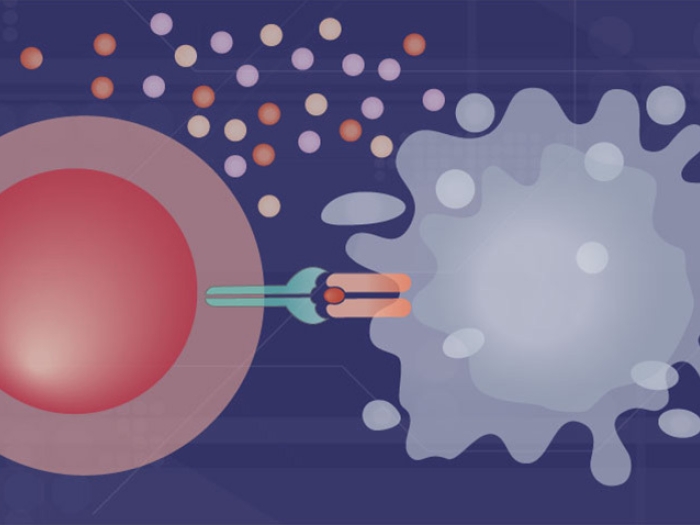The U-M-led development and validation of a staging system for non-metastatic prostate cancer could help doctors and patients assess treatment options, as well as improve clinical trials.
11:00 AM
Author |

Doctors and biostatisticians at the University of Michigan Rogel Cancer Center have led the development and validation of a staging system to better predict outcomes and inform treatment decisions for men diagnosed with non-metastatic prostate cancer.
Although it is one of the most common cancers worldwide, prostate cancer remains one of the few major cancers for which the familiar, numerical staging system — ranging from stage 1 to stage 4 — has not been adopted into national guidelines for treatment or for the testing of new medicines in clinical trials.
LISTEN UP: Listen to the Michigan Medicine News Break on iTunes or anywhere you get your podcasts.
The new proposed system — dubbed STAR-CAP — which appears in JAMA Oncology, draws on patient, tumor and outcomes data from nearly 20,000 patients from 55 centers in the U.S., Canada and Europe to create a robust model with strong prognostic power.
"Localized prostate cancer is sometimes less aggressive, sometimes more — and whether we're patients, physicians or researchers, we all want to know as best we can how aggressive a particular cancer is likely to be," says study co-first author Robert Dess, M.D., an assistant professor of radiation oncology at Michigan Medicine. "That information helps with our conversations with patients, it helps with clinical trial design and it is particularly valuable when you can make those estimates based off of standard information that you would collect when you first see a patient to discuss their treatment options."
The system assigns patients to a particular stage through a point system based on several key variables. These include the patient's age, tumor category, Gleason grade of cell abnormality and prostate-specific antigen levels, also known as PSA levels. And STAR-CAP uses more granularity in these categories than many of the previous models, the authors note.
This is the kind of information that can give patients and doctors more confidence when discussing treatment options and expected outcomesRobert Dess, M.D.
The model divides patients into nine stages of non-metastatic prostate cancer based on their point score — from stage 1 to stage 3, with each stage split into substages of A, B and C.
STAR-CAP's predictions outperformed or equaled previous, non-validated models, including the current American Joint Committee on Cancer staging system, the study notes. And for a significant number of patients, the new model would reclassify them as having less advanced disease — 22% of patients, for example, who would be classified as stage 3A under the AJCC's 8th edition criteria would be classified as stage 1C using the STAR-CAP system, a downgrade of four classification steps.
"This is the kind of information that can give patients and doctors more confidence when discussing treatment options and expected outcomes," Dess says.
Several years ago, the AJCC established criteria to evaluate prediction models for the staging of prostate cancer — however, since no models met the criteria, the most recent staging designations were based on the consensus of experts in the field, says study co-senior author Daniel Spratt, M.D., the Laurie Snow Endowed Research Professor of Radiation Oncology at Michigan Medicine.
"None of the previous models evaluated met the criteria, so none of them could be used," Spratt says. "So we said, 'Well, let's make one.' We wanted it to be transparent, robust and validated, so that we can start moving closer to communicate using a common staging system, similar to other cancers. Right now we primarily categorize people as low risk, intermediate risk or high risk — which is a fairly blunt and imprecise system."
Moreover, the new scoring system is designed to be able to be used worldwide with information that is commonly gathered about a patient and their cancer.
"We're leveraging a backbone of more than three decades of research," Dess says. "And we wanted to do it in a formal way and provide the best validated prognostic system we could come up with that was simple, easy to use, and that relied on readily available information."
The team has made the scoring system available to doctors and researcher worldwide via a web-based app at STAR-CAP.org.
MORE FROM THE LAB: Subscribe to our weekly newsletter
"We know that some of the newest tools that we have that are just coming online like genomics or molecular imaging may improve upon this system, but we wanted to create the best, most widely accessible model based on the data we currently have — understanding that new tools may help us develop even better models in the future," Dess says.
Both Dess and Spratt stressed that the effort would not have been possible without co-first author Krithika Suresh, Ph.D., a former biostatistics graduate student, and co-senior author Matthew Schipper, Ph.D., a research professor of biostatistics at the School of Public Health and research associate professor of radiation oncology at Michigan Medicine, who led the work's complex statistical analyses. Elizabeth Chase, a doctoral candidate in biostatistics was also instrumental, helping to design and develop the online web application, they said.
Nor would the work have been possible without the participation of numerous national and international collaborators.
"This work doesn't get done unless you have the collaborative spirit of investigators across the country and around world," Dess adds.
The research was supported by grants to Spratt from the Prostate Cancer Foundation, the National Institutes of Health (CA186786, CA240991-05, CA231219) and generous philanthropic gifts from patients.
Additional authors include: Michael J. Zelefsky of the Memorial Sloan Kettering Cancer Center; Stephen J Freedland of the Samuel Oschin Comprehensive Cancer Institute; Brandon A. Mahal of Harvard University; Matthew R. Cooperberg and Peter R. Carroll of the Helen Diller Family Comprehensive Cancer Center; Felix Y Feng of the Helen Diller Family Comprehensive Cancer Center and University of California, San Francisco; Brian J. Davis, Bradley J. Stish and Thomas M. Pisansky, Vidit Sharma and R. Jeffrey Karnes of the Mayo Clinic; Eric M. Horwitz of the Fox Chase Cancer Center; Martha K. Terris of the Medical College of Georgia; Christopher L. Amling of Oregon Health and Science University; William J. Aronson of the University of California, Los Angeles; Christopher J. Kane of the University of California, San Diego; William C. Jackson, Jason W. D. Hearn, Yilun Sun, Rohit Mehra, Samuel D. Kaffenberger and Todd M. Morgan of U-M; Curtiland Deville, Theodore L. DeWeese, Stephen Greco, Todd R. McNutt, Daniel Y. Song and Phuoc T. Tran of Johns Hopkins University; Paul L. Nguyen of the Dana-Farber Cancer Institute; Nicholas G. Zaorsky of the Penn State Cancer Institute; Fabio Ynoe Moraes of Queen's University, Ontario, Canada; Alejandro Berlin and Antonio Finelli of Princess Margaret Cancer Centre and the University of Toronto, Ontario, Canada; Nicola Fossati, Giorgio Gandaglia and Alberto Briganti of the University Vita-Salute San Raffaele Hospital, Milan, Italy; Michael W. Kattan of the Cleveland Clinic Foundation.
Paper cited: "Development and Validation of a Clinical Prognostic State Group System for Nonmetastatic Prostate Cancer Using Disease-Specific Mortality Results from the International Staging Collaboration for Cancer of the Prostate," JAMA Oncology. DOI: 10.1001/jamaoncol.2020.4922

Explore a variety of healthcare news & stories by visiting the Health Lab home page for more articles.

Department of Communication at Michigan Medicine
Want top health & research news weekly? Sign up for Health Lab’s newsletters today!





